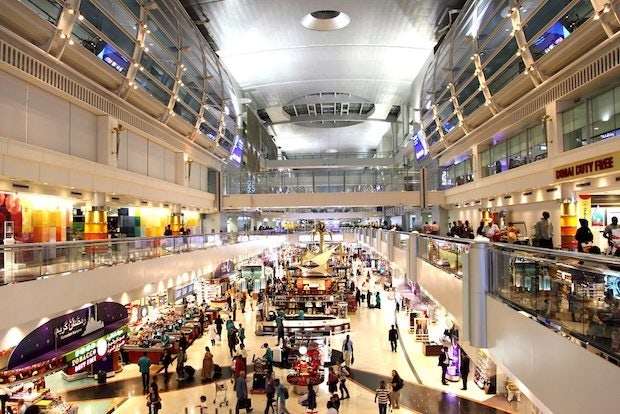The global tourism industry has kept a close eye on China since Beijing's decision in December 2022 to scrap its strict “zero-COVID” policy, looking to see whether big-spending Chinese tourists would soon resume their globetrotting ways. Yet a pre-pandemic resurgence has so far failed to materialize in destinations like Europe or North America, with some experts forecasting long-distance outbound tourism will remain muted until spring at the earliest.
This does not necessarily indicate growing apathy towards Chinese tourist-shopper hotspots like Paris or Milan. As Hamburg-based Wolfgang Arlt, managing director of the China Outbound Tourism Research Institute (COTRI), opined, would-be tourists face obstacles despite the relaxation of travel restrictions in China, with COVID infection rates remaining stubbornly high.
Due in no small part to currency depreciation against the dollar, long-haul travel for luxury shopping at lower prices than in China — a key pre-pandemic Chinese tourism motivator — is expected to remain relatively modest in markets like western Europe. As Luca Solca, senior research analyst at Bernstein, recently noted, "The return of the Chinese to Europe, where [luxury retail] prices are lower, will take some time," adding that he expects a broader Chinese long-haul travel recovery next year.
Dubai Tourism’s China effort more recently included a “Dubai, Long Time No See” trade seminar in Shanghai, in an effort to attract travel agencies as well as airline partners. After its launch in Shanghai, the seminar series continues onward in Guangzhou, Chengdu, Chongqing, Shenzhen, and Qingdao, according to Shine.
Travel to faraway locales has also been impacted by economic concerns and rising costs of living, with a growing number of young Chinese holidaymakers opting for domestic staycations and cheaper travel to nearby Asian countries. This is reflected in the Asia-heavy top destinations for outbound Chinese tourists, led by Thailand, Japan, South Korea, Vietnam, and Singapore, according to Germany’s Deutsche Welle.
Yet Chinese citizens are still eager to travel internationally after the last three years of being unable to travel due to COVID restrictions, according to Renee Hartmann, Co-Founder of China Luxury Advisors (CLA) and co-author of the new book Next Generation Retail: How to Use New Technology to Innovate for the Future. As Hartmann notes, “Most people’s first international trip has been to top destinations in Asia such as Thailand, the Maldives and Singapore, but many are seeking to venture further to destinations such as the Middle East, Europe and North America."

Big holiday spending has long given Chinese tourists outsized importance around the world. According to Turespaña, the Spanish government’s official agency responsible for the worldwide marketing of the country as a tourist destination, visitors from China spend more than $317 (€300) per day in Spain, double that of German tourists. In Switzerland, Chinese tourists spend some $404 (380 francs or €382) per day, triple that of their German counterparts.
And while Chinese tourists may not have returned to some of the most well-worn European or North American destinations in pre-pandemic numbers, travel — whether for business or pleasure — is starting to recover. According to the South China Morning Post (SCMP), Hong Kong’s airport handled nearly 30 times more passengers in January 2023 than it did one year earlier as the city fully reopened its borders.
What this translates to is a renewed effort by tourist destinations and global tourism organizations to woo the China market, in an effort to boost footfall and much-needed revenue.
Dubai, for one, has recently embarked on an intensive charm offensive in mainland China to lure Chinese tour groups and independent Chinese travelers alike. Looking to boost its Chinese tourist arrivals — which hit 989,000 in pre-pandemic 2019, making China the fifth-largest source market that year — Dubai extended its visa-free policy for Chinese visitors and announced a “China Ready” strategy to offer tailored experiences to Chinese tourists.
As CLA's Hartmann notes, "Dubai was already popular pre-COVID, and continues to be at the top of Chinese travelers' lists due to its active welcoming of Chinese tourists.”

With initiatives like Dubai Tourism’s China effort, the big question going forward is whether China’s growing business ties to the Middle East will translate to a luxury retail “gold rush” as Chinese tourist-shoppers and businesspeople alike gravitate to the region. As Nasser Bahlooq, the newly appointed Emirates area manager in Hong Kong, recently told the SCMP, he expects the Dubai-based airline to increase its daily flights from the city from one to four by next year, if demand accelerates as the carrier hopes.
If the pre-pandemic history of global Chinese tourism is any indication, an increase in direct flights will bring new opportunities for luxury retailers in the Middle East broadly and Dubai specifically — the onus ultimately will be on how prepared they are, and whether the shopping experience is good enough to drive repeat visits and positive word-of-mouth.
Said Hartmann of CLA, “Dubai has not only waived its visa policy for Chinese tourists, but has also rolled out China-ready trainings locally to prepare for Chinese tourists, and is actively courting them with targeted marketing campaigns. Destinations that take the extra step to welcome and invite Chinese tourists and make them feel valued and comfortable will be rewarded by Chinese tourist spending as they make up for lost time with travel in 2023.”

